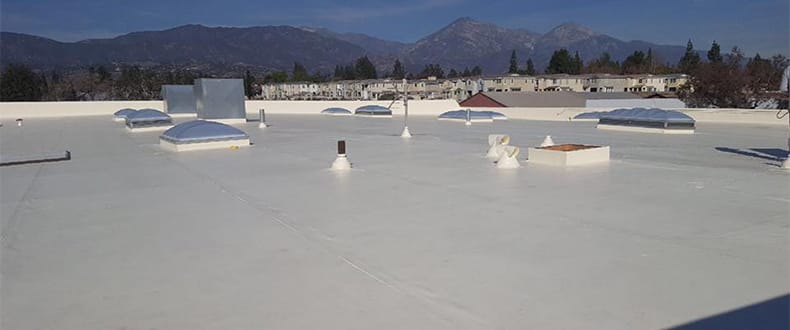3 Single-Ply Roofing Myths Busted

By FiberTite.
Many misconceptions exist surrounding durability, energy-saving capability and condensation with single-ply roofing.
When you were younger, you probably heard that sitting too close to the TV will ruin your eyesight or that drinking coffee will stunt your growth.
As it turns out, these are just myths.
In fact, there are many myths today that don’t hold any truth to them.
There are even myths when it comes to roofing. When identifying today’s most prevalent single-ply membrane roof systems and their appropriate application methodologies, there are a number of misconceptions surrounding the durability, energy-saving capability and condensation concerns of single-ply roofing.
Regardless of what’s being said, single-ply membranes—along with their application methodologies—have evolved to best meet the roofing needs of today’s low-slope commercial buildings. In this post, we’ll reveal the truth behind the myths that are attached to single-ply roofing membranes.
Myth 1: Multi-ply has built-in redundancy, whereas single-ply roofing will puncture easily.
One of the biggest misconceptions people have regarding single-ply roofs is that they can easily be punctured, either by foot traffic or machinery. Contrary to popular belief, single-ply membrane roofing is lightweight and flexible compared to multi-ply, and as a result, single-ply roofing is easy to install as there is less stress put on a building’s structure.
Even though single-ply membranes don’t have the hard exteriors or redundant layers of multi-ply membranes, good materials from reputable manufacturers that are installed by experienced crews will result in successful roofs.
In fact, the foundation of any membrane’s puncture resistance is the reinforcing fabric, while overall thickness of the membrane has very little effect. FiberTite® 36 mil membrane is engineered with the industry’s heaviest base fabric, providing superior puncture resistance as opposed to membranes over twice as thick.
Myth 2: Dark-colored roofs help save energy in the North while “cool roofs” have a heating penalty.
First off, what is a cool roof? A cool roof is one that is designed to reflect more sunlight and absorb less heat than a standard roof. Installing a roof with high solar reflectivity and infrared emittance is a great way to increase a building’s energy efficiency.
FiberTite has one of the best scores from the Cool Roof Rating Council (CRRC) in the industry. The CRRC rates FiberTite roofing membranes at 83 SR and 85 IE, which are among the top scores in the industry.
Just as we wear light-colored clothing to keep us cool on a sunny day, cool roofs serve the same purpose, which is why they reduce energy bills by decreasing air conditioning needs. Even in cool climates with increased thickness of insulation, the cooling cost savings that come with cool roofs can outweigh the heating cost savings with dark-colored roofs.
In a study conducted by the United States Department of Agriculture, it was found that dark-colored membranes were 10 to 15 degrees warmer than white membranes on sunny days. However, dark membranes tended to lose heat faster than white membranes.
Myth 3: Cool roofs have condensation problems.
Another myth when it comes to single-ply membrane roof systems and their appropriate application methodologies is the idea that cool roofs have condensation problems. While it’s been said that cool roofs are prone to unusual levels of condensation within the roofing system which doesn’t dry out, there’s no significant evidence to support the theory that cool roofs have more condensation than dark-colored roofs or do not dry out.
Actually, most roof systems installed without vapor retarders in northern climates are subject to condensation. However, if any forms at all, it will dry out in the summer without doing any harm to the roof system.
SPRI, the Single-Ply Roofing Institute, sponsored a study to determine whether or not cool roofs suffer from condensation problems. Ten roofs were selected, and in seven of them, there was no evidence of any moisture. Slight moisture was found on the backside of the membrane in three of the roofs, but there were no signs of any detrimental effects from the moisture.
Now that you know the truth behind single-ply roofing, you can feel confident the next time your building needs a roofing system installed. To learn more about our single-ply roofing systems or to have one of our experts take a look at your roof, schedule a consultation today.
Learn more about FiberTite.
Editor’s note: This article was first published on FiberTite’s blog and can be viewed here.




















Comments
Leave a Reply
Have an account? Login to leave a comment!
Sign In